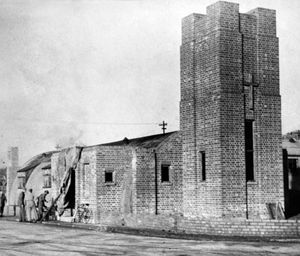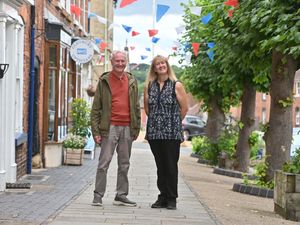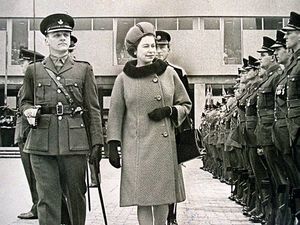Mystery of Army church built from odds and ends
Listen up, you 'orrible lot. Quiz time.
And if you are an old soldier who was stationed in our region, you might, just might, have the answer.
Here's the question: Where in the West Midlands is, or maybe was, this distinctive church crafted by soldiers of yesteryear using materials salvaged and gifted?

Its core was a Nissen hut, but a more permanent feature was a brick tower. Thousands of bricks and other materials were salvage and odds and ends here and there were collected by soldiers and members of the ATS – that's the Auxiliary Territorial Service, the women's branch of the Army.
It was built at an Army camp in our region, but as it was towards the end of the war details of the exact location were subject to censorship, so its whereabouts are a mystery.
Nothing was bought and gifts came in freely from men and women who were to worship there, and craftspeople at the camp worked long hours in their spare time to help get the building completed.
There are clues to its location as the opening and dedication ceremony was planned for January 7, 1945, with the Bishop of Lichfield performing it – so it was clearly in the diocese of Lichfield, which covers a large swathe of our region.
The valuable leaded lights came from the ancient Shropshire church at Melverley, one of the oldest in the Midlands, where death watch beetles had done some damage.
The panelling was of salvaged timber and the altar, altar rail, pulpit and lectern were made of oak worked and carved by soldiers. The stained-glass panel, representing Truth, was a gift from some Surrey friends, and the organ was presented by the British Red Cross.
The church, which was for all denominations, had been built around the Nissen hut, complete with buttressed tower, Gothic chancel, and belfry. There were two bells – one was a gift from an officer, and the other came from a resident in a nearby village.
Two illuminated scrolls worked by soldiers and containing the names of all who had helped with the building, together with the names of the chief donors, were to be placed in the church. Between 40 and 45 service people had helped build the structure.
The Army camp where it stands, or stood, must have been a major one, as 14 separate shields, also made at the camp to show the various units stationed there, were given prominent positions in the building.
Enough of the clues (we haven't got any more anyway). Over to you...
l Can you solve the church mystery? Contact Toby Neal at toby.neal@mnamedia.co.uk.





